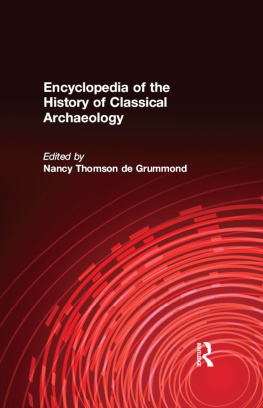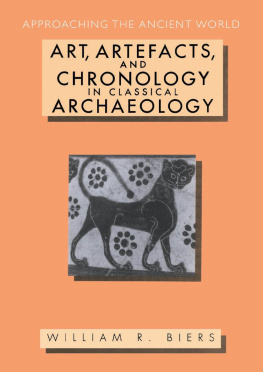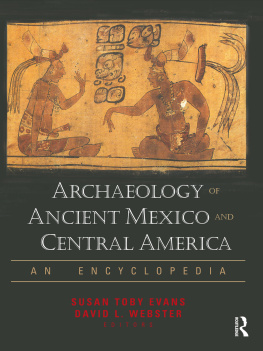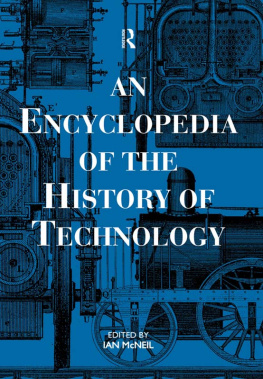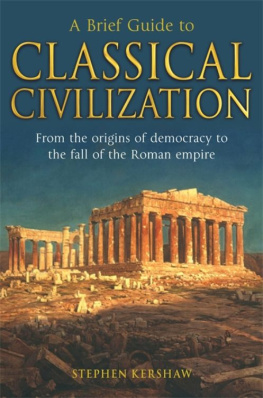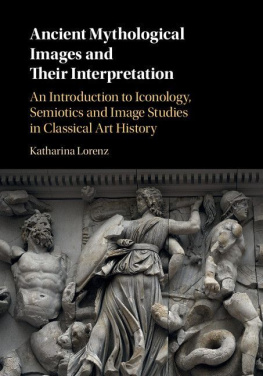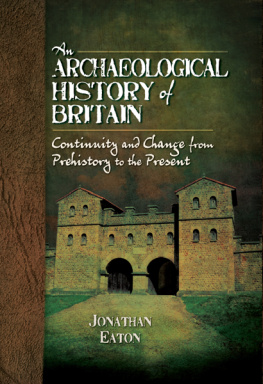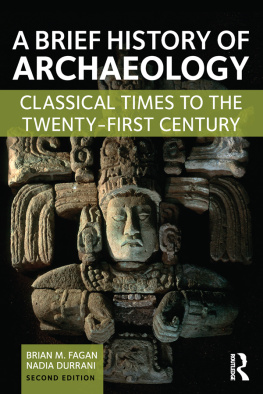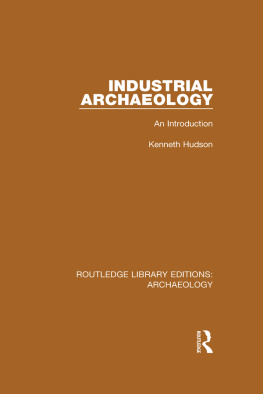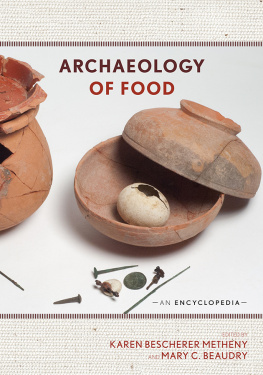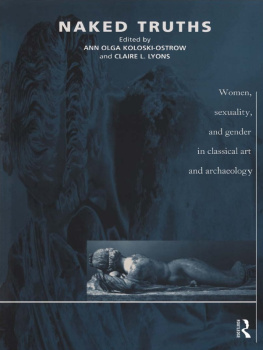De Grummond - An encyclopedia of the history of classical archaeology
Here you can read online De Grummond - An encyclopedia of the history of classical archaeology full text of the book (entire story) in english for free. Download pdf and epub, get meaning, cover and reviews about this ebook. City: Chicago;London;Mediterranean Region, year: 2011;1996, publisher: Taylor & Francis (CAM);Routledge, genre: Religion. Description of the work, (preface) as well as reviews are available. Best literature library LitArk.com created for fans of good reading and offers a wide selection of genres:
Romance novel
Science fiction
Adventure
Detective
Science
History
Home and family
Prose
Art
Politics
Computer
Non-fiction
Religion
Business
Children
Humor
Choose a favorite category and find really read worthwhile books. Enjoy immersion in the world of imagination, feel the emotions of the characters or learn something new for yourself, make an fascinating discovery.
- Book:An encyclopedia of the history of classical archaeology
- Author:
- Publisher:Taylor & Francis (CAM);Routledge
- Genre:
- Year:2011;1996
- City:Chicago;London;Mediterranean Region
- Rating:4 / 5
- Favourites:Add to favourites
- Your mark:
- 80
- 1
- 2
- 3
- 4
- 5
An encyclopedia of the history of classical archaeology: summary, description and annotation
We offer to read an annotation, description, summary or preface (depends on what the author of the book "An encyclopedia of the history of classical archaeology" wrote himself). If you haven't found the necessary information about the book — write in the comments, we will try to find it.
De Grummond: author's other books
Who wrote An encyclopedia of the history of classical archaeology? Find out the surname, the name of the author of the book and a list of all author's works by series.
An encyclopedia of the history of classical archaeology — read online for free the complete book (whole text) full work
Below is the text of the book, divided by pages. System saving the place of the last page read, allows you to conveniently read the book "An encyclopedia of the history of classical archaeology" online for free, without having to search again every time where you left off. Put a bookmark, and you can go to the page where you finished reading at any time.
Font size:
Interval:
Bookmark:

An Encyclopedia of the History of Classical Archaeology
An Encyclopedia of the History of Classical Archaeology
Edited by
Nancy Thomson de Grummond

Copyright 1996 by Nancy Thomson de Grummond
All rights reserved, including the right of reproduction in whole or in part in any form.
For information, write to:
Published by Routledge
2 Park Square, Milton Park, Abingdon, Oxon, OX14 4RN
270 Madison Ave, New York NY 1001 6
Transferred to Digital Printing 2011
British Library Cataloguing-in-Publication Data
Encyclopedia of the history of classical archaeology
1. Classical antiquitiesEncyclopedias
I. De Grummond, Nancy Thomson
937.003
ISBN 1-884964 80 X (set)
1-884964-78-8 (vol.1)
1-884964-79-6 (vol.2)
Library of Congress Cataloging-in-Publication Data is available.
First published in the U.K. and U.S.A., 1996
The paper used in this book complies with the Permanent Paper Standard issued by the National Information Standards Organization (Z39.481984).
Publishers Note
The publisher has gone to great lengths to ensure the quality of this reprint but points out that some imperfections in the original may be apparent.
In memory of
Louise Ponder Thomson (1913-1994)
and
Alfred Valerie Thomson (1913-1993)
Contents
Joann McDaniel
I entered upon it, as one does on a country newly discovered; without any paths made and generally much embarrassed. Had any work of this kind been published I certainly could have made this much more perfect, with extremely less pains; whereas all I can beg for it now is, that the difficulty of making ones way almost everywhere, may be duly considered; and that the many imperfections and errors which that must occasion, may meet with the indulgence that the case deserves.
J. Spence, Introduction to Polymetis (1747)
Since this is the first time an encyclopedia of the history of classical archaeology has been prepared, it is appropriate to begin by describing the scope and methodology of the work. It is necessary to explain first what is understood by classical archaeology. The expression is used here to mean basically the study of the visual remains of the ancient classical lands, Greece and Italy. Greek and Roman material is central; but also included here are the prehistoric or proto-historical cultures of the Bronze Age Aegean and of the Etruscans, which have a relationship of continuity and overlapping with the succeeding cultures in Greece and Italy, respectively, and the study of which is often inseparable from the historical Greek and Roman periods. Also included are manifestations of these cultures outside Italy and Greece proper; in France, for example, Roman arches, amphitheaters and aqueducts that were known, reused, admired and studied are of significance for the history of the study of classical remains. Greek temples and sites in Asia Minor were noted from the fifteenth century, and the story of their systematic recovery and study in the nineteenth century constitutes an important chapter in the history of archaeology. But other related archaeological spheresEgyptian, Near Eastern, Phoenician, Celtic, Scythian, and New Worldare referred to only in passing, for to treat these fully would have meant to write a very different book.
As for the word archaeology, some today apply the term only to the rigorously systematic and scientific aspects of the discipline that have grown up in connection with purposeful excavation in the field. A book like Glyn Daniels A Short History of Archaeology (1981) is based on the idea that archaeology is properly the science of excavating and interpreting excavated evidence and that it reaches its greatest purity when the study is completely prehistoric; inscriptions and literary traditions are considered far less relevant for the discipline. Advocates of this approach have given little attention to those who studied antiquities prior to the advent of scientific fieldwork. Bruce Triggers recent work, A History of Archaeological Thought (1989), shows an awareness of scholarly study of classical remains prior to the nineteenth century but allots a quite small amount of space to early classical archaeologists. For a just survey, one must go back more than one hundred years to the work of C. B. Stark, Systematik und Geschichte der Archologie der Kunst (1880), approximately half of which is devoted to archaeology of the fifteenth to eighteenth centuries.
In this encyclopedia the Middle Ages, Renaissance and seventeenth and eighteenth centuries are treated as periods to be taken seriously for their archaeological study of the visual remains of antiquity. This approach constitutes one of the principal ways in which the work differs from the studies of Daniel, Trigger and others who have, in recent years, written on the history of archaeology. Included here are the biographies of travelers, collectors, artists and scholars whose activities made a difference in knowledge of the sites and monuments in their own day and in the history of archaeological scholarship. Scholars such as Peiresc and Bellori were on the cutting edge of research on antiquities in the seventeenth century and were passionately committed to the exchange of knowledge; we still follow some of their basic methodology and even conclusions. Travelers of the fifteenth century such as Buondelmonti and Ciriaco of Ancona made valuable records of the status of sites and monuments in their day and thus enlarge our own view. Artists like Alberti and Vasari reported on antiquities excavated in their time (Alberti himself attempted an underwater excavation at Nemi), and their reports help us to recover the context of artifacts and monuments under study today.
In addition, here the reader will find entries on famous monuments as seen, changed and interpreted through time; obvious inclusions are the Parthenon, the Mausoleum of Halikarnassos, the Colosseum and the Pantheon, which were visited and studied during the Renaissance and later (for some monuments there are continuous records from the Middle Ages). There are entries on major works of art, such as the Laocoon group, the Farnese Herakles and the Aldobrandini Wedding, which were excavated during the Renaissance and seventeenth century (albeit with an intent and by techniques that are considered very limited today), as well as works that were known throughout the Middle Ages and later, such as the Capitoline Wolf. Studying the biographies of these works, we understand how they came to be the way they are today and are better able to conjecture what they were like originally. The different restorations of the missing parts of the Laocoon group, which make a critical difference in our interpretation of its style and subject matter, can be traced from the sixteenth century. The seventeenth-century report that the Portland Vase was discovered in a sarcophagus is of great interest for our understanding of the usage and meaning of this unusual artifact. Besides such major monuments, many others are included; clearly, not every building or statue or artifact that has been studied through the centuries can have an entry of its own, though a quite large number of works are at least mentioned (the index may be consulted to locate those that do not have an entry). In selecting sites, monuments and statuary for individual entries, an attempt has been made to choose the items that have had a strong impact on classical studies and that have a rich historical past. These are often works that have, or have had, an important place also in the history of art or architecture; for this, perhaps the encyclopedia may be criticized, since New Archaeology in the twentieth century believes that the discipline should not be concerned with the beauty of excavated materials. To this the answer is that in reconstructing antiquity, the basic task of archaeology, it is appropriate to try to see with the eyes of the ancients, who cared a great deal about the beauty of their monuments. In this sense, those who practiced the Old Archaeology were much closer to understanding antiquity than are some scholars today.
Next pageFont size:
Interval:
Bookmark:
Similar books «An encyclopedia of the history of classical archaeology»
Look at similar books to An encyclopedia of the history of classical archaeology. We have selected literature similar in name and meaning in the hope of providing readers with more options to find new, interesting, not yet read works.
Discussion, reviews of the book An encyclopedia of the history of classical archaeology and just readers' own opinions. Leave your comments, write what you think about the work, its meaning or the main characters. Specify what exactly you liked and what you didn't like, and why you think so.

